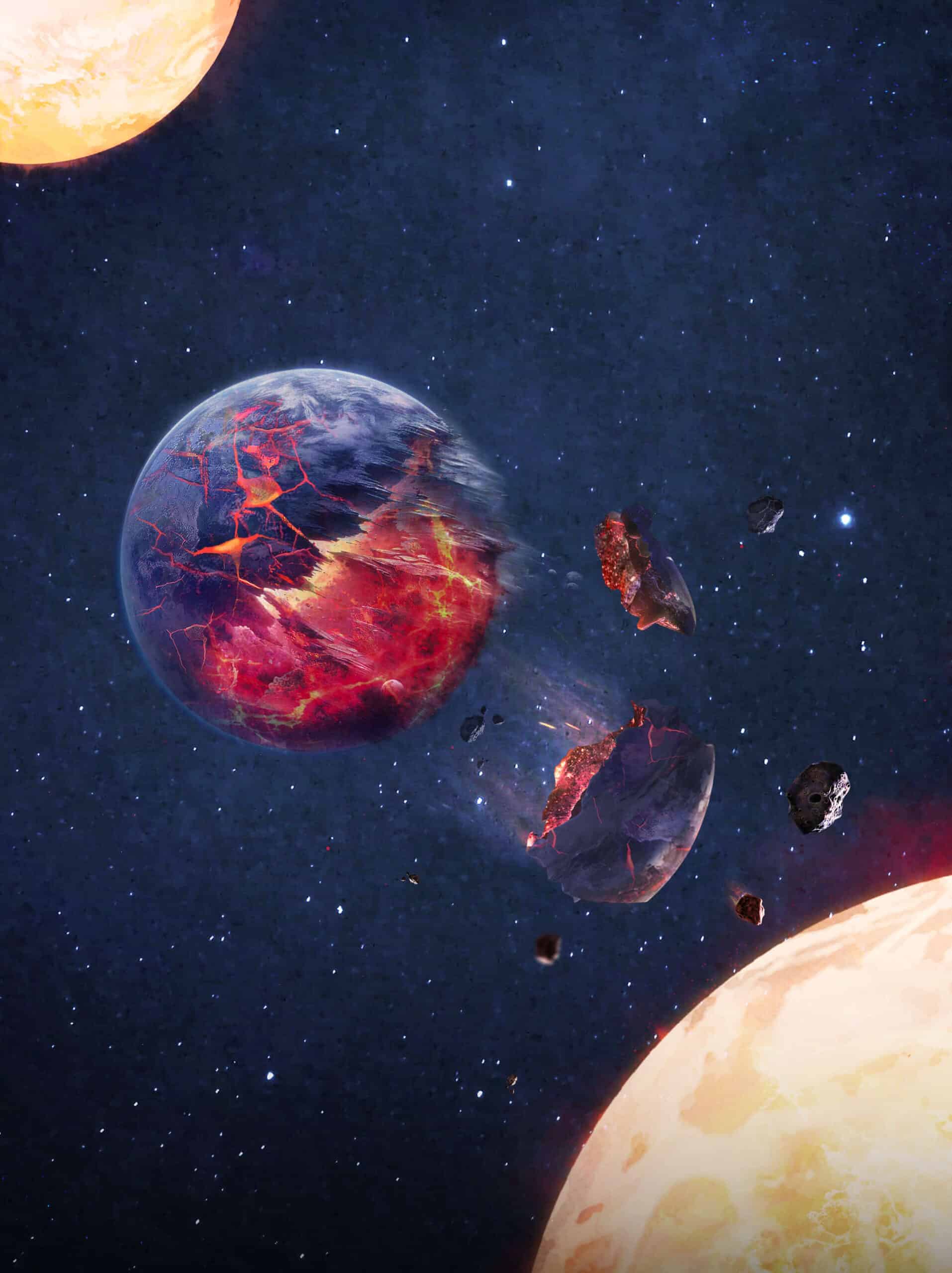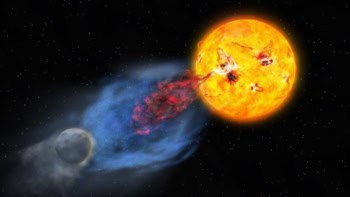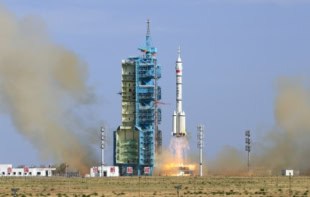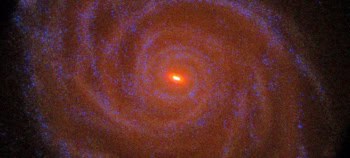
Roughly one in 12 main-sequence binary stars may have ingested a planet at some point in its past, say astronomers in Australia. This conclusion, which is based on new analyses of the chemical compositions of 91 pairs of such stars, implies that a significant fraction of planetary systems may be unstable – a conclusion that could, in turn, affect the probability of life developing there.
When a star engulfs a planet, its chemical makeup changes. To detect the chemical signatures of these so-called “planetary ingestion events”, astronomers compare the elemental composition of pairs of stars that were born at the same time. Because these “co-natal” stars formed from the same parent molecular core, they should, in theory, have the same chemistry. In reality, about 8% of them don’t – an anomaly the team attribute to one of the co-natal stars ingesting nearby planetary material sometime earlier in its life cycle.
High precision analysis
To reach this conclusion, the astronomers began by identifying 91 pairs of close co-natal stars – that is, those situated less than 106 astronomical units apart – using the European Space Agency’s Gaia satellite. They then used spectral data from three major telescopes (the Magellan Telescope and the Very Large Telescope in Chile, plus the Keck Telescope in Hawaii, US) to examine, with high precision, differences in the pairs’ chemical compositions.
“Thanks to this very high precision analysis, we can see chemical differences between the twins,” says team member Fan Liu of Monash University. “This provides very strong evidence that one of the stars has swallowed planets or planetary material and changed its composition.”
The stars the team studied were all so-called main sequence stars in their prime, not red giants approaching the end of their lives. This is an important distinction because red giants are known to engulf nearby planets as they expand, but ingestion events were thought to be less common for younger stars. “Astronomers think that seeing these kinds of events is possible but they don’t expect us to be able to observe them in such a high occurrence rate,” explains team member Yuan-Sen Ting of the Australian National University (ANU). “But from the observations in our study, we can see that, while the occurrence is not high, it is actually possible. This opens a new window for planet evolution theorists to study.”
While planetary ingestion may seem far-fetched, the astronomers found that it matched their observations better than alternative hypotheses they considered. “As Sherlock Holmes says: when you have eliminated the impossible, whatever remains, however improbable, must be the truth,” Ting observes.
“An unsettling truth”
According to the team, the results from the study, which is detailed in Nature, could provide new constraints on how connections between stellar and planetary chemistry form and evolve. More importantly, though, the team believe the findings could have far-reaching implications for theories of planet formation.
“Another key point of excitement (and perhaps an unsettling truth) is that if a significant fraction of planetary systems are unstable, it suggests that our stable solar system might not be the norm,” Ting tells Physics World. “This gives us a greater appreciation for our unique – and fragile – position in the universe.”
An unlikely pilot study
The new study is part of a larger collaboration called the Complete Census of Co-moving Pairs of Objects (C3PO). The aim of this project, which began when Ting was at Princeton University and the Carnegie Observatories in the US, is to spectroscopically observe a complete sample of all bright co-moving stars. “Although I am mostly a theorist at heart, through work with a student, which I co-supervised with my PhD advisor at Harvard, we unexpectedly found that stars that are co-moving are also born together,” Ting explains. “This led me to think that if this is true, it would greatly expand the candidates we can study, as such studies [of co-natal stars] were mostly done with gravitationally bound binaries, which are much rarer.”
Despite promising results from theory and simulations, investigating this hypothesis observationally was a high-risk endeavour, Ting says, and it came about in an unusual way. “By chance, one of the largest telescopes was undersubscribed, so we were asked to submit some ‘interesting ideas’,” he says. “Within a day, I submitted this idea, with a view to conducting a pilot study. We argued that since this was extra time, it was an opportunity to try something bold.

Astronomers see first evidence of a new planet being born
“That the telescope time allocation committee put their trust in me, despite the fact that I am a theorist with zero observational experience, was a boon,” Ting adds.
Searching for more planet-eaters
Spurred on by the success of the pilot, Ting moved to Australia. There, he was joined by Liu and another ANU astronomer, David Yong, who took the project to the next level. “We applied for a larger programme, asking for significantly more telescope time,” he says, “but all of this really started with a small spark and a brief discussion with students – could we prove that stars moving together are also co-natal?”
The team now hope to expand the number of planet-ingesting star candidates to analyse – something that might require even more intensive telescope resources. “Theoretically, we also need a better understanding of the conditions under which a planetary system might not be stable, something that is widely speculated but not yet fully understood,” Ting adds. “Some AI tools that I am currently developing might lead to better insights into this problem, so stay tuned.”



